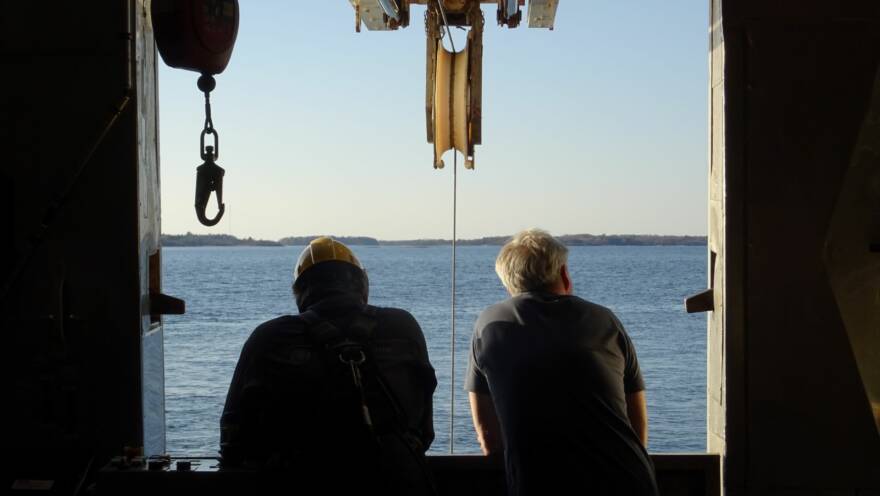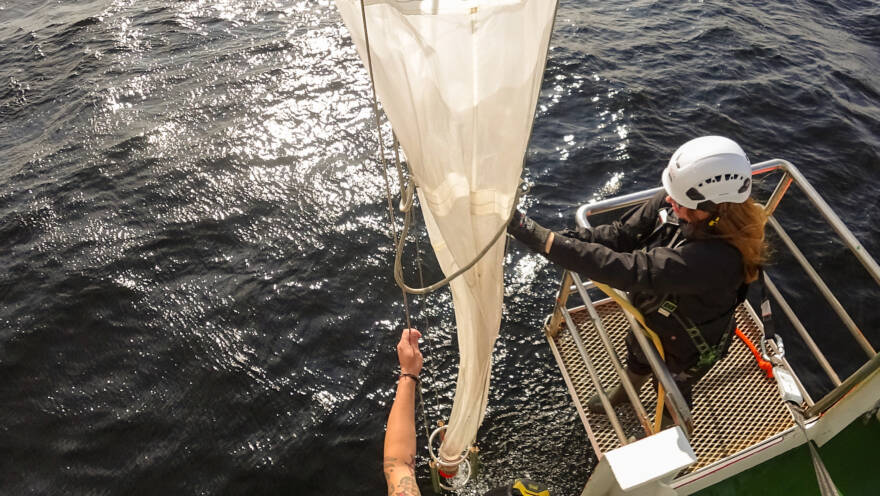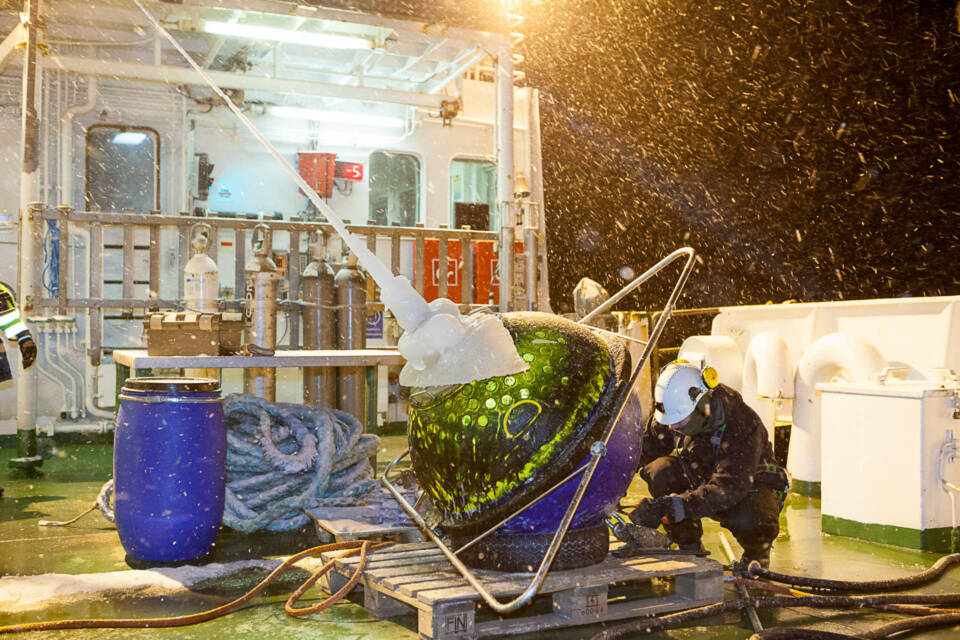
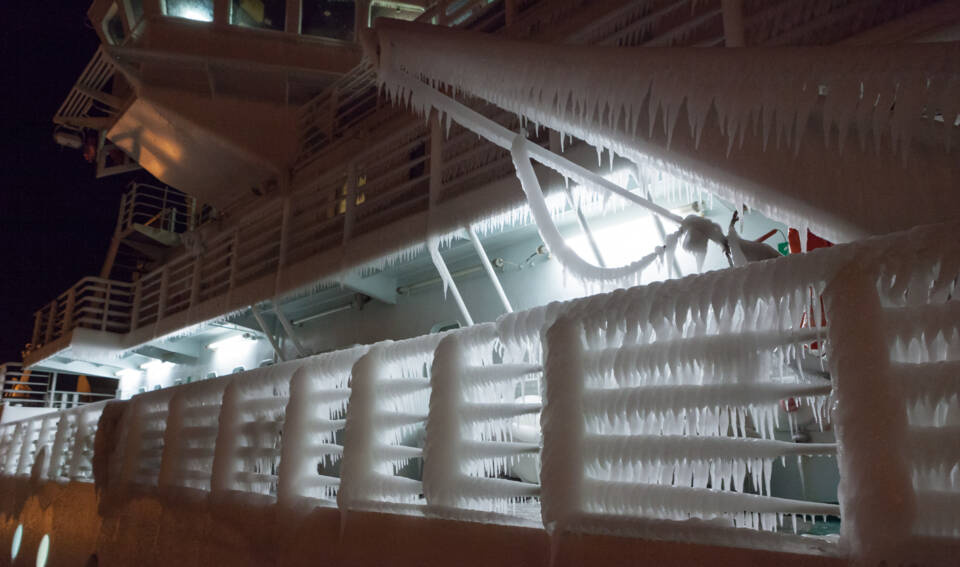
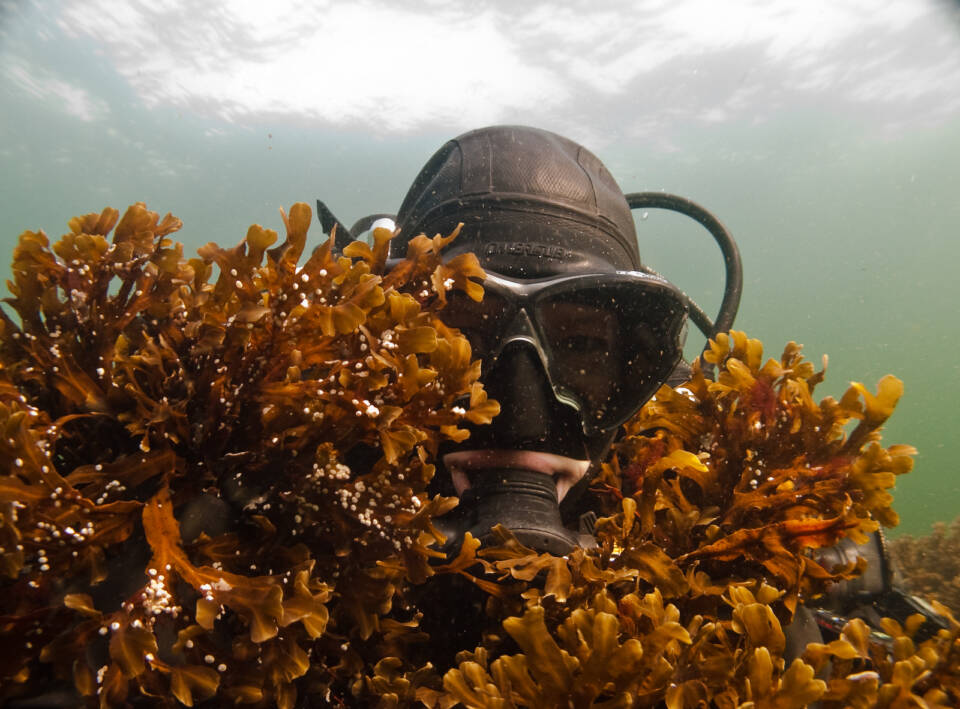
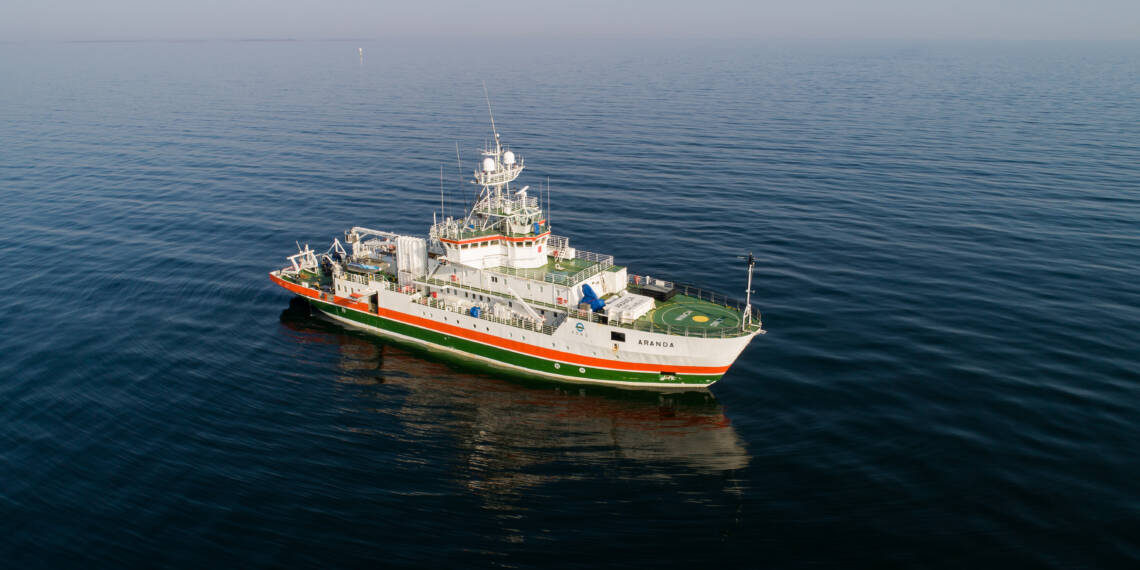
Each year, four extended monitoring trips are carried out on the research vessel Aranda. These monitoring expeditions are part of the Baltic Sea Monitoring Programme, which is coordinated by the Commission for the Protection of the Baltic Sea (HELCOM). In addition to these voyages, shorter expeditions are also made on Aranda.
Aranda spends about 100 days at sea per year. The research voyages last from a few days to a week or two. Work onboard is done in two shifts, lasting an average of 12 hours per day. The ship has, among other things, a kitchen, a gym, a library, and a sauna.
On Aranda, work is carried out in both sunshine and blizzards. The ship’s manoeuvrability is calibrated to meet the challenging requirements of marine research work. For example, a so-called sky anchor, i.e. Differential Global Positioning System (DGPS), is connected to the ship’s steering system, which makes it possible to keep the vessel at the exact desired location while at a sampling station with metre accuracy even in high winds.
The RV Aranda is a polar research vessel and research trips are made in the Baltic Sea all year round. Exploratory trips to the polar regions must be made in spring, summer or autumn when the sea ice is thin enough to navigate. In winter, sea ice in the polar regions can reach up to seven metres in thickness, which is too much even for icebreaker ships.



The research vessel Aranda collects information for optimising the greening of the shipping industry. While the ship is underway, it is possible to examine both emissions and fuel consumption simultaneously. Such information tells exactly what kind of driving at sea is the most environmentally friendly.
Also, Aranda’s transmission is fully electric, which can ensure the quiet driving necessary for research vessels. The ship can also travel short distances on battery power alone, thereby further minimising ship noise.
In 1995, Aranda was on a research expedition off the Swedish coast near the shores of Gotland Island. The voyage was interrupted by an exceptionally severe storm, in which the wave height reached 5-6 metres and the wind was temporarily as high as 44 metres per second. The storm lasted eight hours, during which the wind was recorded at hurricane levels for one and a half hours. It is no wonder that the press reported that the research vessel Aranda had hit “harsh weather”.
Marine researcher, Tanja Kinnunen, was on the voyage: “Fortunately, we survived without physical damage, but it was a wild experience, especially for the scientists.”
During the storm, the crew tried to keep the ship in place, as forward progress was impossible. There was a quiet and focused atmosphere on the ship’s bridge. The ship was steered by two people instead of automatically. The captain kept the bow of the ship pointed into the direction of the wind and the helmsman used the throttle, always giving more power as the next wave passed the ship.
“We scientists had all gathered in the ship’s mess and the atmosphere was expectant. It was almost impossible to move around the vessel because the ship was heaving so much. Maybe some of us were waiting for what would happen next. I am sure that all of us were waiting for the storm to break. “

